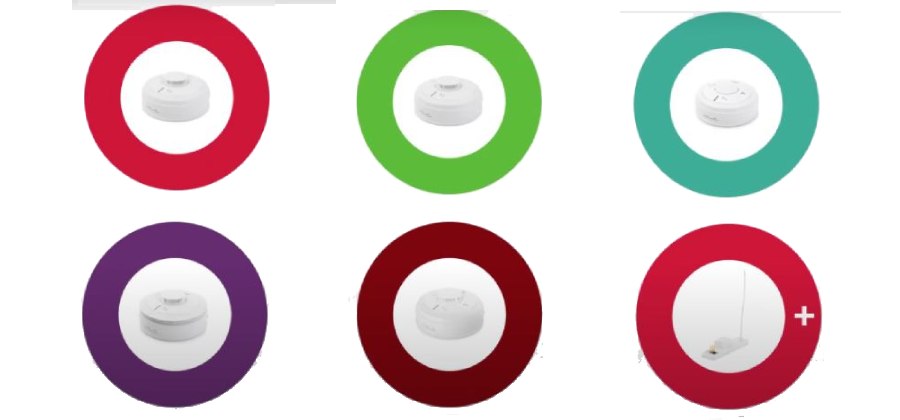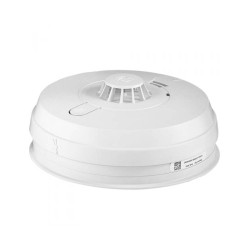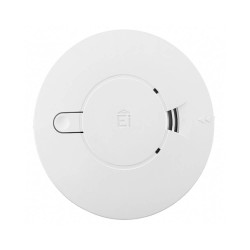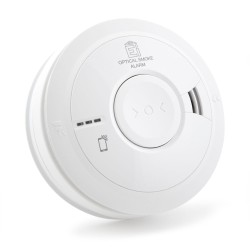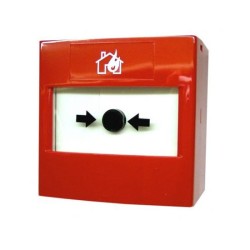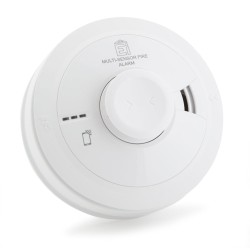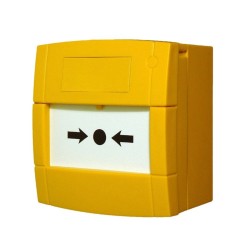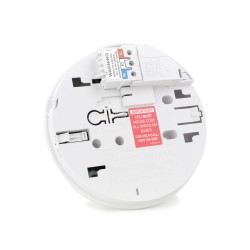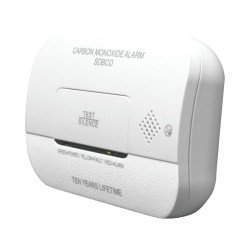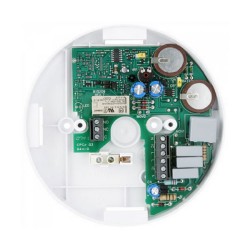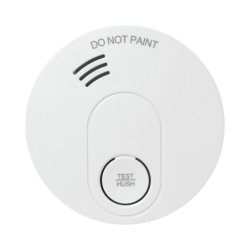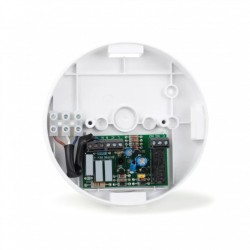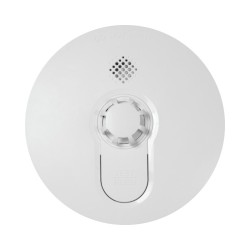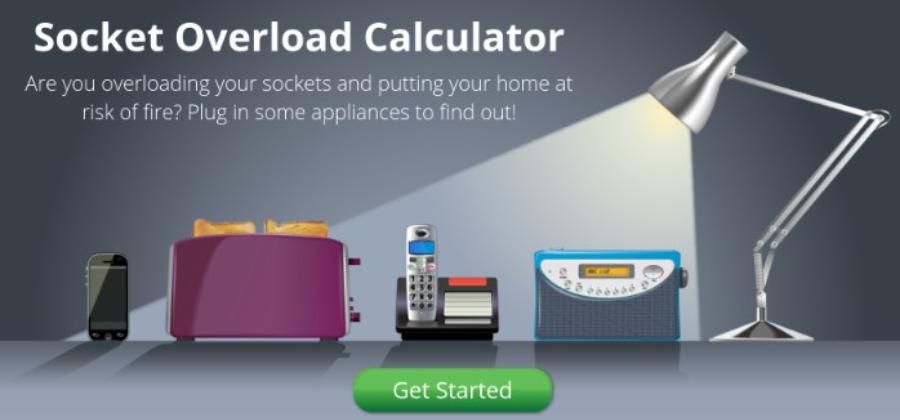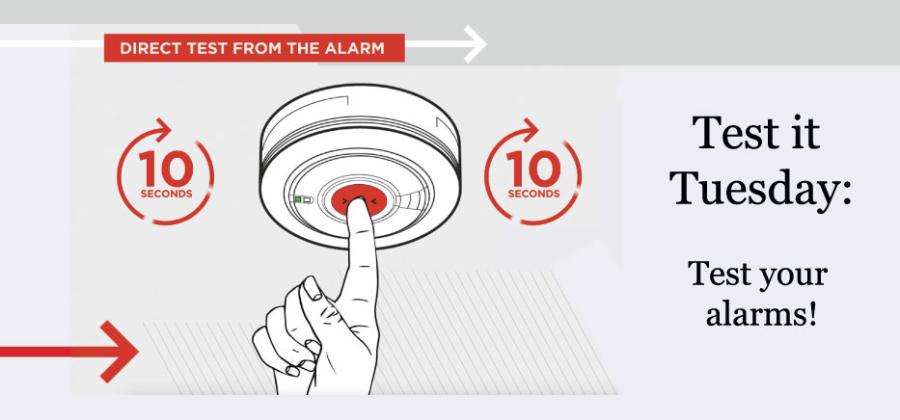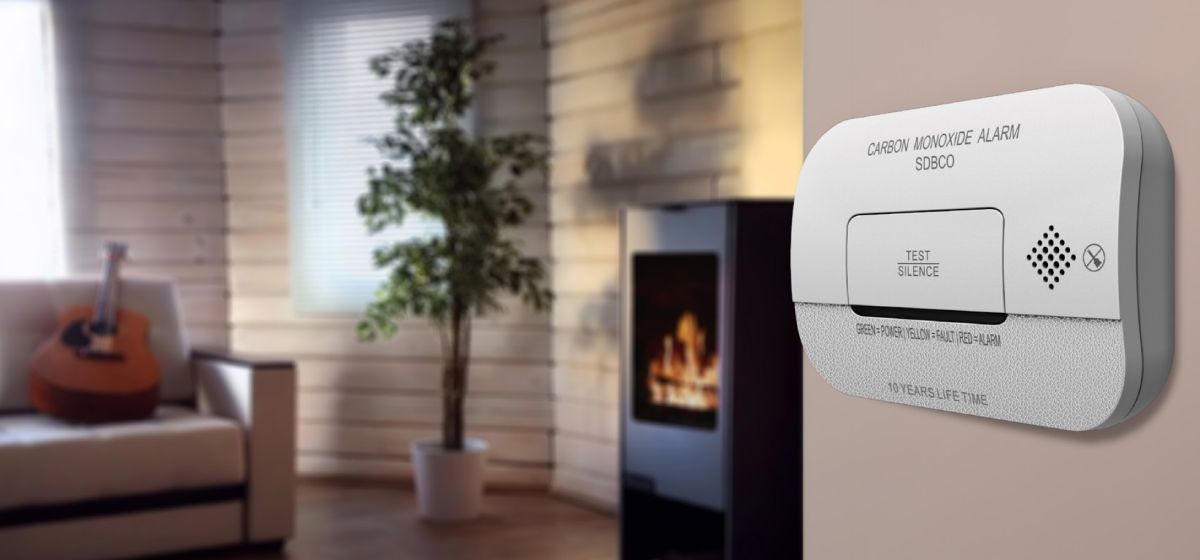Fire safety is a must, especially in the case of rented places; it is imperative for landlords and tenants alike to know what alarms landlords need to install. The regulations have been amended and updated in 2022 and can be found via, Smoke and Carbon Monoxide Alarm Regulations 2022: guidance for landlords and tenants. Fire kills, and a fire alarm can save your life. The UK government's campaign, Fire Kills, shows that a smoke alarm that works can save your life and that it is important to test your smoke alarms at least once a month to make sure they work properly. Especially when it comes to rented properties, smoke alarms and carbon monoxide alarms (if applicable) need to be fitted. And from 1 October 2022, the regulations have been extended to cover social housing also. In this article, we would like to see what alarms the landlords need to install or provide, how interconnecting the alarms can help, and what are the most common questions related to fire safety in rented properties.Fire Safety: What Alarms are Required in Rented Properties?The Smoke and Carbon Monoxide Alarm (Amendment) Regulations 2022 came into force on 1 October 2022. From this date, all the relevant landlords must ensure three main things:1. At least one smoke alarm is installed on each storey of the rented property where the room is used as living accommodation. Since 2015 this has been a legal requirement in the private rented sector. The rules do not specify what type of alarm (such as a main-powered or battery-powered alarm) should be installed. It only says that each storey of the rented property needs to have one. It is recommended, however, that landlords choose the type of smoke alarms based on the needs of their building and their tenants. All smoke alarms need to be compliant with British Standards BS 5839-6. If a battery-powered alarm is used, they need to come with sealed-for-life batteries rather than alarms coming with replaceable batteries. Both Aico and BG Electrical offer a wide range of smoke alarms for rented dwellings - see them here.2. A Carbon Monoxide alarm needs to be installed in any room used as living accommodation which contains a fixed combustion appliance (excluding gas cookers). As in the case of the smoke alarms, the regulations don't stipulate what kind of CO alarms (such as mains-powered or battery-powered) should be installed. The landlords are required to make an informed decision and choose the type of carbon monoxide alarms they need to install based on the needs of their building and their tenants. This kind of alarm needs to be compliant with British Standards BS 50291. It is recommended that the battery-powered Carbon Monoxide alarms would be the "sealed for life" kind rather than the alarms with replaceable batteries. Some of the best Carbon Monoxide alarms can be found on this list here.3. All smoke alarms and Carbon Monoxide alarms need to be repaired or replaced once informed and found that they are faulty. It is one thing to have a smoke alarm or a CO alarm installed, but it is something else to make sure they work. Local authorities can impose a fine of up to £5,000 when a landlord fails to comply with a remedial notice. Where do the Smoke Alarms and Carbon Monoxide Alarms need to be Located in Rented Properties?The current regulations don't stipulate where the smoke alarms, heat alarms, and Carbon Monoxide Alarms should be located. They only say that at least one smoke alarm should be installed on every storey which is used as living accommodation. Also, a CO alarm needs to be installed in every room used as a living accommodation and contains a fixed combustion appliance (excluding gas cookers). Landlords need to follow the individual manufacturer's instructions when installing the alarms. In the case of the smoke alarms, they should be fixed to the ceiling in a circulation space such as a hall or a landing. A Carbon Monoxide alarm generally should be positioned at head height, either on a wall or on the shelf, approx. 1-3 metres away from a potential source of Carbon Monoxide. When you fit a heat alarm in the kitchen, you will have a warning when there's an increase in temperature caused by fire, but it will not be set off by cooking fumes; this reduces the risk of false alarms. However, it is not recommended to install a smoke alarm in the kitchen, as it will lead to frequent false alarms when cooking. Fire Safety in Rented Properties: Interconnected Alarms are SaferLong gone are the days in which you install a smoke alarm here, another CO alarm there, and yet another heat alarm over there. Nowadays most alarms are interconnected, thus offering you a safer way to be protected against fire. When the smoke alarms and the CO alarms are interconnected, what happens is that each alarm tells you when there's smoke or Carbon Monoxide in any room that contains that alarm. We recommend using interlinked alarms in rented properties, such as the Aico RadioLINK alarms or the BG Electrical interconnected alarms. When the smoke alarms, heat alarms, and Carbon Monoxide alarms are interlinked and one goes off, they all go off, so you will always hear it no matter where you are in the house. This makes interconnected smoke alarms safer than standalone smoke alarms. We have written before on the RadioLINK technology from Aico and the AudioLINK newest updates.Frequently Asked Questions on Fire Alarms in Rented PropertiesBoth on the side of the landlord and on the tenants' side there are many questions regarding fire safety, the landlord's responsibility and the tenants' duties regarding the fire alarms. Here are some of the most frequently asked questions on fire alarms in rented properties.Buy Aico Ei3016 at SparksDo we need a Carbon Monoxide Alarm when you have a decorative fireplace?Some homes and rented properties have a decorative fireplace that is not used and doesn't constitute a fixed combustion appliance. The question is, does a CO alarm need to be installed in that room? In such cases, the landlord needs to put in the tenancy agreement that the fireplace must not be used and therefore a CO alarm is not required. Is it OK to disable a fire alarm because it keeps going off?One of the most common practices, unfortunately, is for tenants to simply disable or take off the fire alarm. They may say it keeps going off, or they may just uninstall it for a different reason. Either way, this is not allowed; all smoke alarms and Carbon Monoxide alarms need to be in working condition, especially in rented dwellings. If the alarms keep going off, the battery might need to be changed, or there may be smoke or CO in the surrounding areas, which needs to be dealt with. Should we test the alarms? How often?The landlord or a representative of the landlord is required to test the smoke and CO alarms periodically to make sure they work. On the first day of the tenancy, the alarms need to be tested, and then periodically (once a month is best) they need to be tested to make sure they are in good working order. It is important to check the expiry date printed on the detector and press the TEST button to make sure the audible alarm sounds. The tests need to be recorded and kept in a file safely. Once someone moves into a rented property it is usually the tenant's responsibility to test the smoke and Carbon Monoxide alarms. They can test them weekly or at least monthly, and it's good to practice doing this according to a schedule. During interim inspections it is essential to test smoke and CO alarms, keeping records to show when the tests were done. We have written more on testing the alarms here.What to do when an alarm is faulty?Sometimes a smoke alarm or a Carbon Monoxide alarm may be faulty; this may be reported either by the tenant or by the landlord when they do the regular tests. In such cases, from 1 October 2022, the landlord is responsible to repair or replace the defective alarm as soon as reasonably practicable. BG SDMCO Mains Carbon Monoxide DetectorDoes replacing the battery count as repair, and who is responsible for it?Landlords are responsible for repairing or replacing any faulty alarms. If the alarms are not working properly, the landlord needs to fix them either by replacing the battery or by replacing the alarm. If changing the battery doesn't fix the problem, it is the landlord's duty to replace the alarm.Who enforces the rules and where to report illegalities?The local housing authorities in England are responsible to enforce these regulations. And if landlords fail to comply with such requirements, the local authority can serve them a remedial notice by which they require the landlord to fit and/or test the alarms within 28 days. If this does not happen, the local authority can issue the landlord with a civil penalty notice of up to £5,000, and then the local authority must carry out the work specified in the remedial notice to ensure the tenants are safe. The landlords, however, can dispute the civil penalty notice by writing to the council and requesting a review within 28 days of the notice being served. Furthermore, if a landlord remains unhappy with the outcome, he can appeal to the First-tier Tribunal. Are specialist alarms required for people with disabilities?The landlord is responsible to install and provide fire safety for their tenants. If the tenants are deaf or hard of hearing, specialist smoke alarms and carbon monoxide alarms may be required. These alert by vibration or flashing lights, as opposed to by sound alerts. Landlords should and must consider their duty under the Equality act 2010. Aico has a wide range of disabled fire alarms which can also be interconnected.Can a heat detector replace a smoke alarm?A heat detector cannot replace a smoke alarm. Where a smoke alarm is required, you cannot install a heat detector. What kind of housing do these regulations apply to?The regulations outlined in this article apply to all homes that are rented by private landlords or registered providers of social housing, unless excluded. The excluded tenancies are detailed in the current regulations and includeshared accommodation with a landlord or landlord’s familylong leasesstudent halls of residencehotels and refugescare homeshospitals and hospiceslow-cost ownership homesother accommodation relating to health care provisionDo these regulations apply to live-in private-sector landlords?If the tenant shares the accommodation with the private landlord or his family, these regulations do not apply. They are not aimed at owner-occupied properties. Do these regulations apply to House in Multiple Occupation (HMOs)?Yes, they applied to unlicensed HMOs, and no, licensed HMOs are exempt from parts 1 to 5 of the regulations but only because the regulations also amend the HMO licensing obligations in the Housing Act 2004 so as to impose similar requirements.Do these regs apply to owner-occupiers or shared-ownership homes?No, these regulations do not apply to either owner occupiers or occupiers living in a shared-ownership home. Where can we find the current Fire Safety Rules for Rented Properties?There are many resources online concerning fire safety in rented properties, from the current regulations in the UK to websites that interpret and explain these regulations. Here are some places where you can find out more concerning the current fire safety rules for rented properties. Legislation on the smoke and Carbon Monoxide alarms (England) 2015 - see here. Amendment to the smoke and CO alarm regulations for rented properties in 2022 via this link.A helpful guide to the regulations: Guidance for Landlords and Tenants from the Government. View it here.Fire Kills: further advice on fire safety; see the government campaign, via this link.Building safety act 2022. Smoke and Carbon Monoxide Alarms - Understanding the regulations, via, London Property Licensing.Top Ten Landlord Requirements When Letting Out Your Property in 2022, via, National Safety Inspections.Smoke and Carbon Monoxide Detector Requirements - via National Residential Landlords Association. What do you need to know? On this page, you'll find an overview of the fire safety responsibilities of private rented sector landlords. More at, London Fire Brigade.
